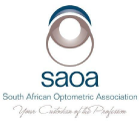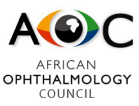Research Notes
Visual acuity, amplitude of accommodation and near point of convergence and academic achievement in primary school learners in Bloemfontein
African Vision and Eye Health | South African Optometrist: Vol 73, No 1 | a5 |
DOI: https://doi.org/10.4102/aveh.v73i1.5
| © 2014 Mariette Nel, Stephen Hartley, Melissa Maartens, Carla Pheiffer, Monwabisi Nonkula, Anel Steyn
| This work is licensed under CC Attribution 4.0
Submitted: 04 August 2014 | Published: 04 August 2014
Submitted: 04 August 2014 | Published: 04 August 2014
About the author(s)
Mariette Nel, Department of Biostatistics, Faculty of Health Sciences, University of the Free State, South AfricaStephen Hartley, Department of Optometry, School for Allied Health Professions, Faculty of Health Sciences, University of the Free State, South Africa
Melissa Maartens, Department of Optometry, School for Allied Health Professions, Faculty of Health Sciences, University of the Free State, South Africa
Carla Pheiffer, Department of Optometry, School for Allied Health Professions, Faculty of Health Sciences, University of the Free State, South Africa
Monwabisi Nonkula, Department of Optometry, School for Allied Health Professions, Faculty of Health Sciences, University of the Free State, South Africa
Anel Steyn, Department of Optometry, School for Allied Health Professions, Faculty of Health Sciences, University of the Free State, South Africa
Full Text:
PDF (314KB)Abstract
Introduction: Learning problems influencing the social and psychological development of children may result from poor visual acuity (VA), insufficient amplitude of accommodation and receded near point of convergence (NPC). This study assessed Grade 4 and 5 academic achievement (< 50%, 51-69% and ≥ 70%) in relation to visual acuity, amplitude of accommodation and NPC. The study attempts to determine the association between these visual functions and academic performance.
Methods: A cross-sectional study included a randomised sample of learners (n = 199) selected from five public schools in Bloemfontein. Information was obtained on each participant regarding history, visual acuity (distance and near), amplitude of accommodation and NPC (subjective and objective). Participant aggregates for the most recent school term and the grade average were compared to measures of these visual functions.
Results: The children’s median age was 10.3 years (with range 8.7 to 12.7 years) and 53.8% were female. More than 50% of children were Sesotho-speaking. Complaints revealed by his-tory-taking were mostly headaches (57.8%) and eyestrain (58.3%). Regarding academic achievement, 18.6% of the learners were below average, 53.8% on average and 27.6% above average. Of the learners tested, 42.2% achieved a VA of 6/6 or better on both distance and near visual acuity. Amplitude of accommodation was less than the minimum requirements in 17.6% of participants. Approximately 30% of those below grade average did not meet the minimum requirements for amplitude of accommodation, compared to 13% of learners above grade average, which was statistically significant. More than 70% had a receded break point (> 5 cm) for NPC and 85.7% had a receded recovery point (> 7 cm).
Conclusion: Of the three visual functions evaluated in this study, the only visual function associated with academic achievement was amplitude of accommodation. It would thus be recommended that learners are screened for optimal visual function earlier in life if especially the amplitude of accommodation is receded.
Methods: A cross-sectional study included a randomised sample of learners (n = 199) selected from five public schools in Bloemfontein. Information was obtained on each participant regarding history, visual acuity (distance and near), amplitude of accommodation and NPC (subjective and objective). Participant aggregates for the most recent school term and the grade average were compared to measures of these visual functions.
Results: The children’s median age was 10.3 years (with range 8.7 to 12.7 years) and 53.8% were female. More than 50% of children were Sesotho-speaking. Complaints revealed by his-tory-taking were mostly headaches (57.8%) and eyestrain (58.3%). Regarding academic achievement, 18.6% of the learners were below average, 53.8% on average and 27.6% above average. Of the learners tested, 42.2% achieved a VA of 6/6 or better on both distance and near visual acuity. Amplitude of accommodation was less than the minimum requirements in 17.6% of participants. Approximately 30% of those below grade average did not meet the minimum requirements for amplitude of accommodation, compared to 13% of learners above grade average, which was statistically significant. More than 70% had a receded break point (> 5 cm) for NPC and 85.7% had a receded recovery point (> 7 cm).
Conclusion: Of the three visual functions evaluated in this study, the only visual function associated with academic achievement was amplitude of accommodation. It would thus be recommended that learners are screened for optimal visual function earlier in life if especially the amplitude of accommodation is receded.
Keywords
Visual acuity in children; academic achievement and vision, amplitude of accommodation; near point of convergence
Metrics
Total abstract views: 7672Total article views: 7766
Crossref Citations
1. The Effects of Vision Training on Attention in Children with Accommodative Dysfunction
Eun Jung Kim, Hyun Mee Lee
Journal of Korean Ophthalmic Optics Society vol: 28 issue: 2 first page: 107 year: 2023
doi: 10.14479/jkoos.2023.28.2.107


